
Watch the Program
 |
 |
 |
 |
 |
|
This one-hour
program is divided into five chapters. Choose any chapter below and select
QuickTime or Windows Media Player to begin viewing the video. If you experience
difficulty viewing, it may be due to high demand. We regret this and suggest
you try back at another time.
Technical Help | Feedback | Program Credits | Program Transcript
|
 |
 |
|
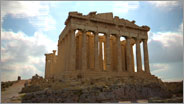
watch chapter 1 in
Quicktime
Windows Media: hi |
low
|
|
An Icon of Civilization
This segment:
- presents the Acropolis Restoration Project
team's goal.
- notes that while the structure appears visually
straight, it includes subtle curves that make each piece architecturally unique.
- reports that current restoration efforts include
correcting mistakes made by earlier restorers.
running time 8:05
|
 |
 |
|
| |
 |
 |
 |
|
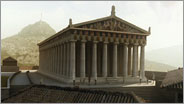
watch chapter 2 in
Quicktime
Windows Media: hi |
low
|
|
Optical Illusions
This segment:
- chronicles how the team tried unsuccessfully to use
technology to map where pieces should fit together in the two inner walls and
ended up doing it by hand and eye.
- recounts the history of Athens before and during the
Parthenon's construction, including Greece's victory over Persia,
the rule of Pericles, and the golden age of Greece that heralded the beginning
of democracy.
running time 7:38
|
 |
 |
|
| |
 |
 |
 |
|
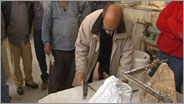
watch chapter 3 in
Quicktime
Windows Media: hi |
low
|
|
Lost Since Antiquity
This segment:
- suggests that the ancient Greeks may have
deliberately incorporated subtle architectural refinements to create a
structure that appeared visually perfect.
- visits the quarry from which marble was obtained for
the restoration.
- demonstrates how present-day masons use an ancient
device called a pantograph to help recreate a missing piece of marble.
- shows how modern restorers, like their ancient
counterparts, use red clay to coat the inside of a new piece of marble being fitted
to an original piece, in order to determine where the new stone needs further
carving.
- reveals that chisel marks indicate the workmanship
of about 200 different stonemasons.
running time 10:57
|
 |
 |
|
| |
 |
 |
 |
|
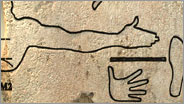
watch chapter 4 in
Quicktime
Windows Media: hi |
low
|
|
Perfect Proportions
This segment:
- explains how ancient Athenians may have found a way
to standardize different units of measure used by the Parthenon's large,
diverse workforce.
- reports how ancient Greeks viewed the proportions of
the ideal human body as inspiration for architectural dimensions.
- points out that while scholars have largely
discredited the use of the so-called golden ratio in the Parthenon, they have
found that some of the structure's proportions correspond to a ratio of
4:9.
- demonstrates how ancient builders were able to
create extremely precise marble surfaces and joints, level to within fractions
of a millimeter.
- shows how the ancients precisely aligned two column
drums by placing two halves of a fitted piece of wood within each column prior
to joining.
running time 10:57
|
 |
 |
|
| |
 |
 |
 |
|
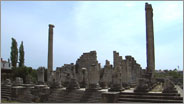
watch chapter 5 in
Quicktime
Windows Media: hi |
low
|
|
A Sculptural Achievement
This segment:
- identifies the scale drawing technique that ancient
Greek architects apparently used to create the architectural refinement known
as entasis—the slightly curving
profile of the Parthenon's columns.
- recounts the turbulent history of the Parthenon
after its creation.
running time 11:51
|
 |
 |
|
| |
 |
|

|
  |
|
Secrets of the Parthenon Home |
Send Feedback |
Image Credits |
Support NOVA
|
© |
Created January 2008
|